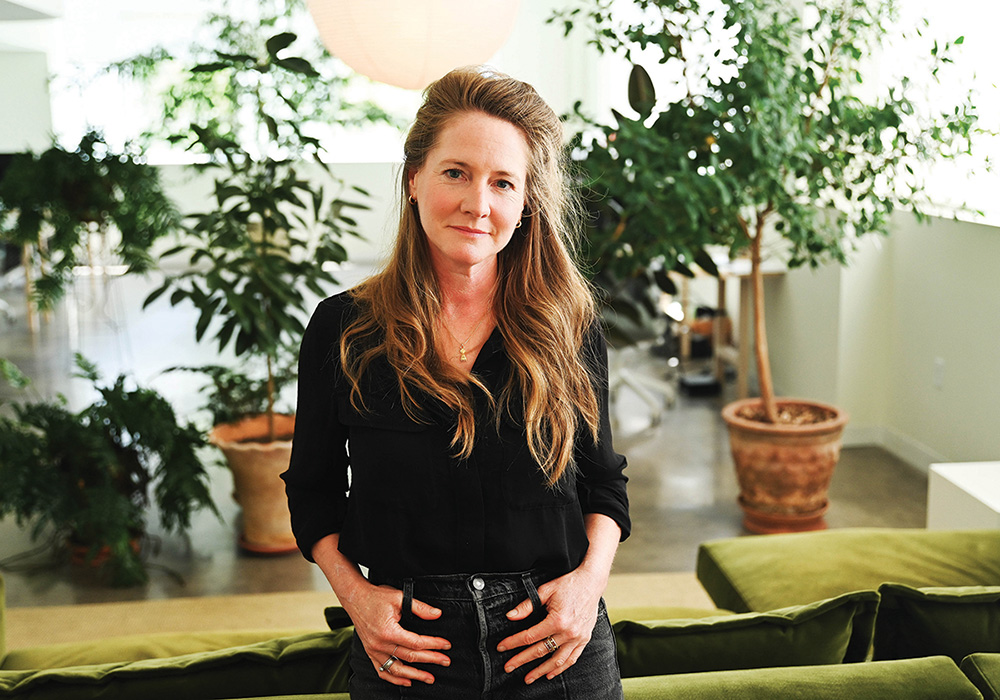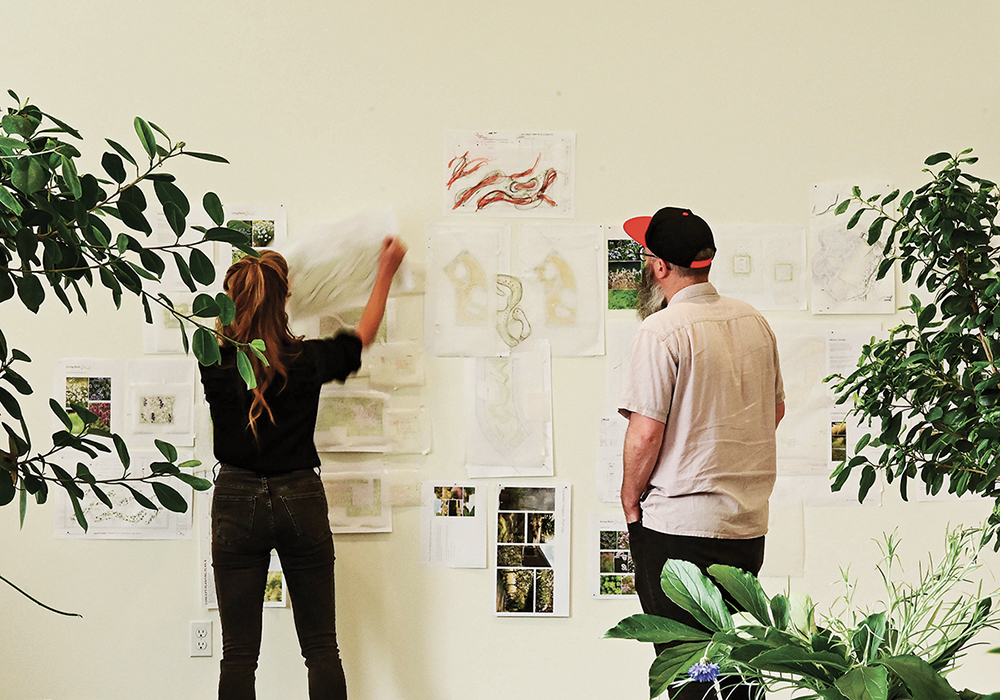Kate Ancaya to discuss high-altitude gardening at Asheville symposium

Kate Ancaya (photo courtesy Living Roofs, Inc.)
The Speaking of Gardening Symposium will host its 25th iteration in August, with insightful lectures from nearly a dozen perennial plant experts. As one of the keynote presenters, Asheville landscape architect Kate Ancaya plans on taking her talk to new heights — quite literally.
In 2006, Ancaya and her husband, Emilio, founded Living Roofs, Inc., the first North Carolina company dedicated to vegetated roofs and landscape-on-structure projects.
“We created the company because we were interested in the potential of green roofs … to bring nature into cities in an unexpected way and increase resilience in the Southeast region,” says Ancaya. “We envisioned green roofs as natural infrastructure unfurling across the built environment and stitching nature back into the urban fabric.”

But as one of few green roofers below the Mason-Dixon Line, Ancaya quickly learned that what worked up north wasn’t going to work in the mountain South.
“Sedums often come to mind when people think of a green roof,” says Ancaya. These plants are tight and low-growing, like a carpet, she notes. “But in our climate, they aren’t always a great fit. Only a few sedum species flourish on green roofs in the Southeast, due to our humidity and extreme heat.”
After extensive research and trial and error, Ancaya landed on a viable alternative: the rooftop meadow.

A rooftop meadow, she says, “is exactly what it sounds like.” Imagine pollinator-supporting sedges and pretty perennials like prairie dropseed, penstemon (colloquially “beardtongue”), black-eyed Susans, and butterfly weed swaying gracefully in the wind as swallowtails flitter and honeybees buzz. It’s just like the grassy, wildflower-strewn field you might find in a sun-soaked valley — “except several stories in the air,” says Ancaya.
These aerial landscapes are aesthetically stunning but also versatile. For each project, Ancaya references local plant communities for inspiration. While designing a pavilion for the Highlands Biological Station, for instance, she selected species native to the high-elevation temperate rainforests of Western North Carolina. (The nature preserve sits at 4,000 feet.)
Whether her company is working on a “brownfields site” (i.e., a former industrial site) in midstate South Carolina, a tall apartment building in downtown Asheville, or a niche in a neighborhood park, “we look to native plants and regional ecological richness for inspiration,” Ancaya confirms.
In supporting a diverse selection of native species, rooftop meadows “provide habitat and refuge for native pollinators, invertebrates, and songbirds,” explains Ancaya. These lofted oases also offer migratory birds a spot to rest their weary wings.
There are benefits to humans, too. According to Ancaya, covering a roof with vegetation extends its life expectancy by up to three times its natural span by protecting the membrane from sun and extreme temperatures, and by controlling stormwater runoff via absorption and evapotranspiration.
“We hope that once people see what is possible,” says Ancaya, “they will look out over rooftops with a new perspective and imagine the potential to transform these overlooked spaces into a beautiful tool for resilience.”
The Speaking of Gardening Symposium will be held at Embassy Suites by Hilton Asheville Downtown (192 Haywood St., Asheville) on Thursday, Aug. 1 and Friday, Aug. 2. Kate Ancaya will present “Future Roof: How Plants Transform Rooftops Into Resilient Infrastructure” Thursday from 11am-12:05pm (find a full schedule and more information at speakingofgardening.org).To learn more about Living Roofs, Inc., visit livingroofsinc.com.
